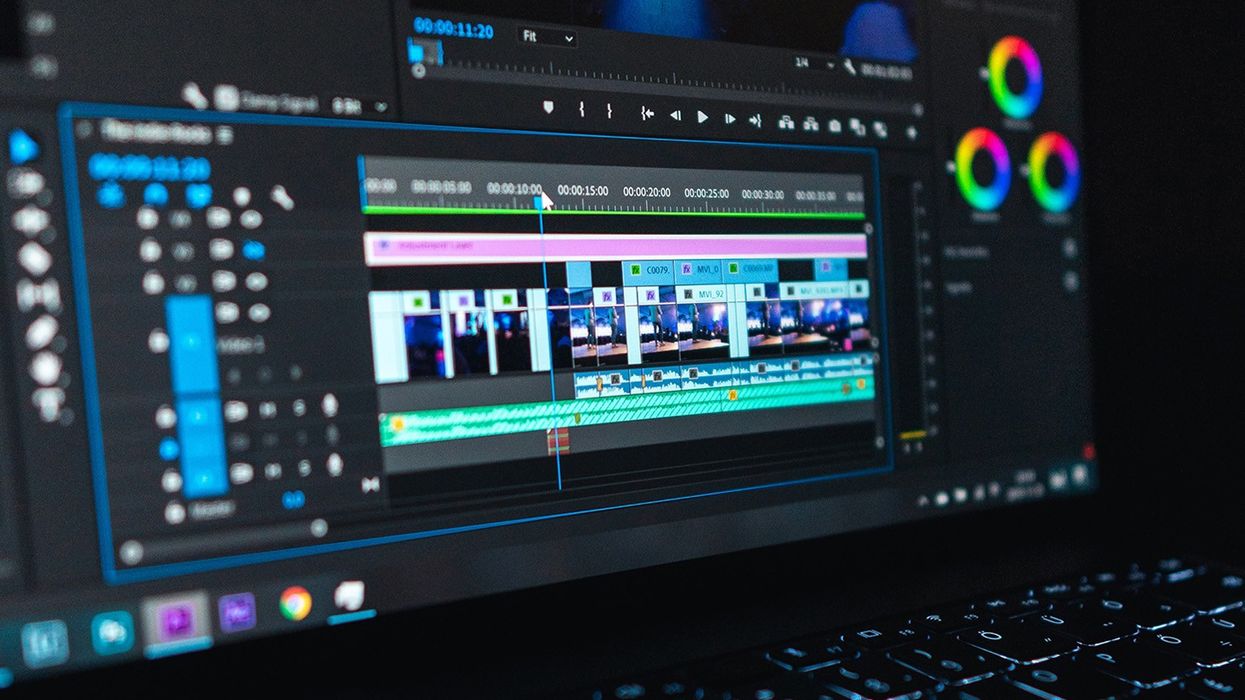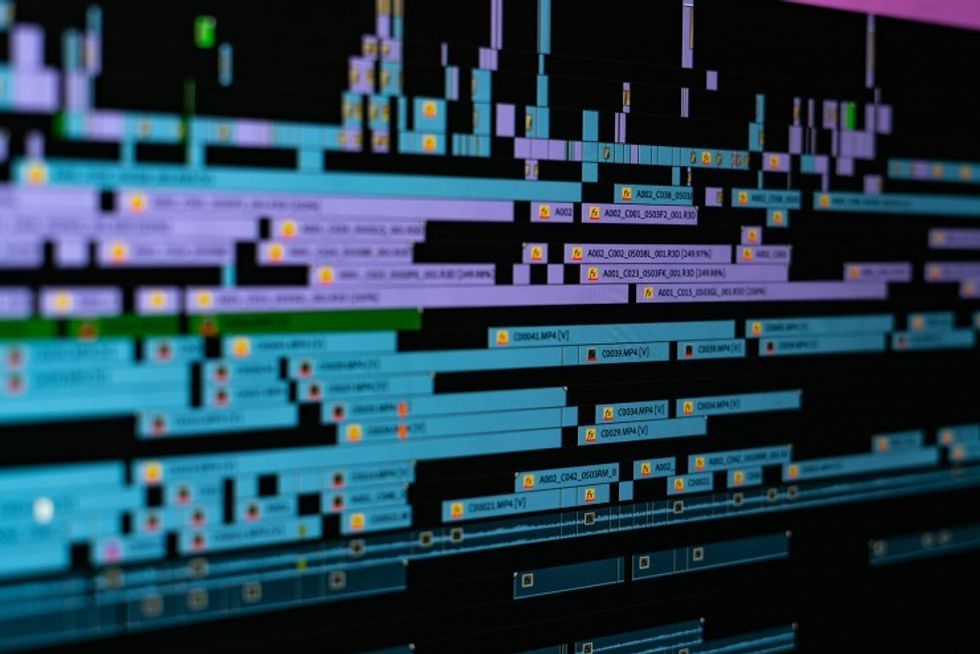Eight Essential Cuts Every Video Editor Needs to Know
How many different types of edit points exist in the world of post-production?

The answer to that question will depend a lot on how you decide to parse the filmmaker's lexicon. But no matter if you're a beginner to the edit bay or have some projects under your belt already, it's good to get a refresher on the basics.
Here are eight of the most useful and widely applicable cuts, with some help from Shutterstock. Check out their video below, then jump into our advice.
1. Your Ordinary, Average Cut
This is the simplest type of edit possible. One clip starts, and, before it's over, another one gets jammed right in. Invisible editing calls for each point of transition to be smooth and borderline imperceptible to the audience. Editing seamlessly allows you to craft the story, molding each event to cinematic perfection.
Simple edit points are the building blocks upon which you build each sequence and scene. They're your magic portal from moment to moment. You can compress time or draw things out significantly by working between the lines in this way.

2. L-Cuts and J-Cuts
As mentioned, continuity editing is, ideally, invisible to the audience. When linking up two different clips, what is the best way to create the illusion of continuity?
L-cuts and J-cuts look a lot like Ls and Js in your timeline. The edit point for the audio of the clip and for the accompanying picture are offset. When the subliminal association between these two sensations is broken, the audience is much less likely to be jarred out of their experience by the transition.
L-cuts reveal the visual aspect of the incoming footage before switching over to this second clip's sound bed. J-cuts do the opposite—we hear what's coming before we see it.
Try them both out the next time you've got something of a hiccup to hop over in your coverage. You can conceal a lot under a well-timed and well-constructed L-cut or J-cut.
3. Cutaways
A cutaway is a simple reprieve from the main coverage of a scene—two friends hiking in the woods, for example. They hear a noise above them; from their two-shot, we cut away to a point of view shot, looking up into the canopy of trees.
Another related industry term here might be "B-roll," but it's not always the right way to describe cutaways. An insert shot, for example, is another type of cutaway: a shot of the woman on QVC cuts away to a related insert, a close-up on the item on sale that she's holding.
Gordon Ramsey fans, eat your hearts out. Unless you're seeing the man's face, you're looking at a totally different pair of hands every time we cut into the pan or the mixing bowl.
4. Match Cuts
A match cut is a shot that links up seamlessly with the one that came before. Match cuts involve not only the contents of each piece of footage, however. Almost more important than the action of the shot is the timing with which both assets are stitched together.
Timing a match cut is as simple as taking two similar takes—two opposite over-the-shoulder shots, for example—and finding the perfect moment to hop in between. During your first assembly, this may simply involve following each actor as they take their turn to speak.
As you advance through the editorial process, however, you'll be able to refine the way that you swoop in and out of the scene, using choice reaction shots and staying with one character or another as they process each big reveal.
The entire scene will sell as long as each shot matches up with the action of the last—that is, a person holding a glass of water in one shot should also be holding it in the shot that follows immediately.

5. Action Cutting, or Cutting on Action
Action cutting is another technique in invisible editing. Instead of hiding the edit point underneath your mix-down as you would with an L-cut or a J-cut, you instead catch a ride with something going on within the frame—a door opening, an angry person rushing from their seat, a judge's gavel pounding, or the swing of a huge sword mid-battle.
Cutting on action might include timing each edit to the beat of a song or the rhythm of some other dance, like the person boxing in the video. You, the editor, are invited to groove with the contents of each shot.
6. Jump Cuts and Smash Cuts
Jump cuts are the opposite of continuity editing. Instead of a seamless and immersive progression, we create something that feels less natural by chopping up a single clip so that the subject "jumps" at each edit point.
You can do the same thing by lining up a bunch of clips that resemble each other to some extent—we're playing with time here, skipping or repeating actions, movement, and emotion. It's an odd and uncanny type of mood to set, but if the occasion calls for them, jump cuts might give the scene a certain edge.
You can use jump cuts and smash cuts to dice a sequence up, à la Requiem for a Dream. You can also smash between dramatic moments and points of transition, gripping the audience at every intersection between scenes.
7. Cross-Cutting, or Parallel Editing
When working with a dramatic plotline and many moving parts, it can be helpful to latch on to one or a few lines of action within your sequence as a structural foundation. In an action movie, for example, you might have the following on your plate:
- A city of people in imminent peril
- A damsel in immediate danger
- The sidekick, locked in battle, knife at his neck
- The supervillain behind it all, watching everything closely via a hidden camera in his laboratory
- Our hero, ripping ass across the country in a stolen vehicle, nearly too late to save them all
With all of this happening at once, keeping things in balance might be something of a challenge. You'll need to touch upon each parallel line of action frequently enough so that the audience remains engaged with each important plot point and development without slowing things down.
If you've never tried this before, try to choose one parallel sequence to serve as your baseline, the most important one in your opinion. Then, you can ornament the sequence with each important beat from the rest. Breaking them all down into sections may help you organize yourself. Each moment should play off of the one that came just before; we're stoking the audience's interest, gearing them off for a big payoff at the end.
As the clock ticks on, increasing the speed with which you hop in and out of each parallel scene is one way to raise the stakes, bringing all five vignettes to a head before concluding them all simultaneously. "Landing" a parallel sequence means timing everything out so that no single line of action lags behind the rest, culminating in something less than satisfactory.

8. Montage Cutting
Montages are sort of like parallel sequences without the attitude. Instead of a breakneck jaunt through something dramatic and suspenseful, the passage of time or a series of events is conveyed through a much looser, thematically diffuse sequence.
Think about your favorite 80s movie glow-up. The popular girl removes the main character's glasses, and away they go to the mall. They get the nerd's hair cut, they try on different outfits, and they run into all sorts of zany shenanigans along the way.
At the end of it all, the protagonist has received a successful makeover. We don't need to see every outfit that she tried on to know exactly what went down. Such is the power of montage.
This sequence may play out over the course of one single afternoon in diegesis, but, where parallel cutting puts us right into the driver's seat without missing a beat, montage sequences are less likely to be as time-driven. That is, the sequences themselves aren't literal; plenty of time has been removed for the sake of creative flow, and we, the audience, are expected to know this. It's one great way to condense many events, showing the audience what transpired, without sitting them through the entire spiel, unabridged.
Many music videos embody this characteristic of montage. The members of the band may participate in many outlandish and vaguely-related set-ups, but these gags aren't necessarily meant to be interpreted as simultaneous, interwoven events within a single, continuous story. Instead, they convey emotion.
What's in Your Arsenal?
No matter where your project takes you, telling the story means giving your viewer everything that they need to fall in love with your cast of characters. Which type of cut will take them from point A to point B most effectively?
Ultimately, the final call is yours. Nobody knows your project better than you do—once you've learned the rules of the road, the choice will practically be made for you.
Source: Shutterstock













